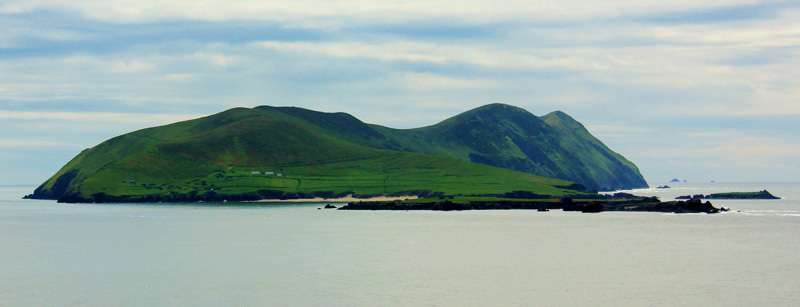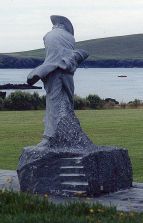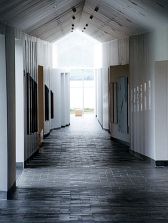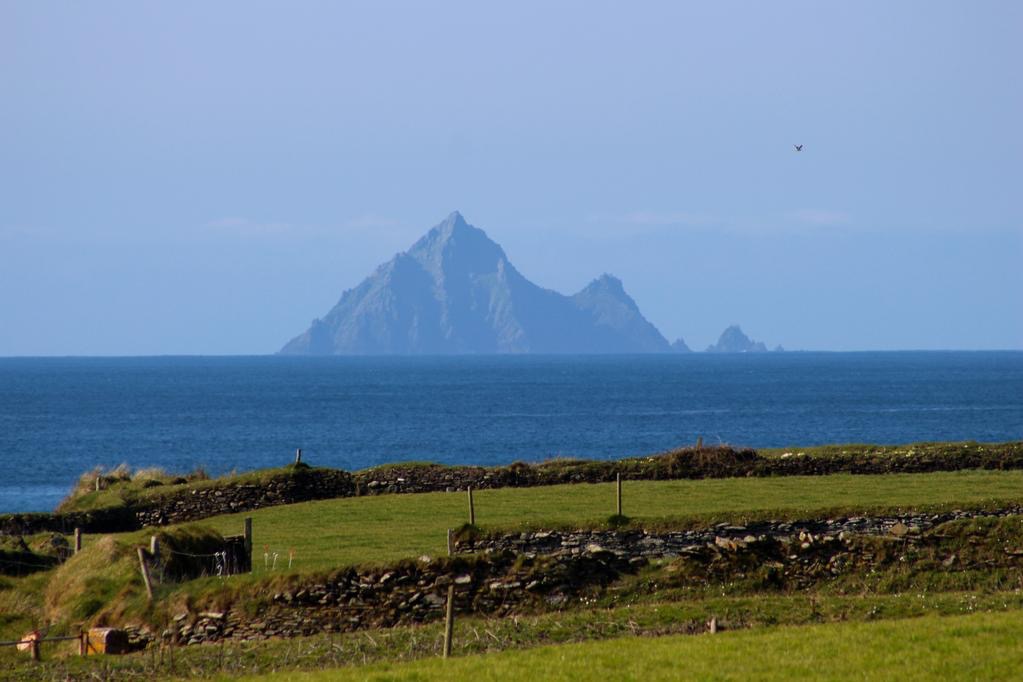

The archipelago that makes up the Blasket Islands is the most westerly land in Europe. The archipelago is made up of The Great Blasket, Inishmore, Inis Mhic Fhaoileáin, Inis Tuaisceart, Inis na Bró, An Tiaracht, Beginish, Young’s Island, Illaunboy and a multitude of rocks and reefs.
About 2 miles west of the mainland lies the largest of the islands, The Great Blasket. After been inhabited for thousands of years it was finally abandoned in 1953, when the last islanders moved to the mainland. Since then life on the island has stood still where now only the only sounds are of the seagulls, gannets, skylarks and the ocean.

The remains of the deserted village with just over 30 traditional Irish cottages lie clustered on the sheltered hillside, the island’s only cultivable land, at the eastern end of the island. Its 100 to 200 inhabitants were dependent mainly on the sea for their survival the families on the island grew their own potatoes, grazed a small flock of sheep on the hills of the island and perhaps a cow. Turf (peat) was cut near the highest point, dried and drawn home by donkeys to be burned in the cottages for heat and cooking. The islanders traded lobsters and mackerel with the mainland for other supplies.
Without doctors, nurses, pubs or shops, the only contact with the mainland was by rowing a naomhóg (a small traditional boat) the 2 miles to Dún Chaoin before making the 8 mile trip over the mountain to Dingle.

The island’s Irish speaking population has produced a wealth of great literature, referred to as “The Blasket Library”, including autobiographies such as “An tÓileánach” by Muiris Ó’Súilleabháin, “Fiche Blian ag Fás” by Tomás Ó’Criomhthain and “Peig” by Peig Sayers. Many of the islanders works are now recognised as classics of the Irish language and have been widely translated.

On the island one can walk to the top of Cró hill (961′), then explore the western end of the island and awe at the panoramic views from the top of the island before returning back to relax on the magnificent White Strand and taking the ferry back to Dún Chaoin in late afternoon. During the summer months, a few people live on the island, providing hostel accommodation, tearooms and a craft shop.
Before making a visit to the Great Blasket, it is worth considering a visit “Ionad an Bhlascaoid Mhóir” (the Great Blasket Centre) at Dunquin to learn about the wealth of literature from the islands small community and appreciate the poverty and hardships endured by the islanders. Peig Sayers, one of the most famous Blasket Island authors is buried in a graveyard near the Centre.

The half-hour ferry service from the quay at Dún Chaoin (Dunquin), operates daily from 10 a.m. (weather permitting). For information on ferry services, cruises and angling visit – www.blasketferries.com, telephone 066 9156422.




















